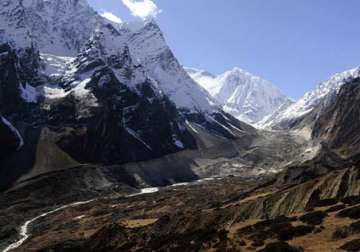Beijing: China's glaciers particularly those in Tibet have retreated by about 7,600 square kms - nearly 18 per cent - in the last 65 years and even the thick ice around the base camp of the Mt Everest has disappeared exposing its rocks structure due to rising pollution level, officials said. An average of 247 square kms of glacial ice has disappeared every year since 1950, a Chinese official said. Even mountaineers on Mount Qomolangma (Tibetan name for Mt.
Everest) seem surprised.
“Qomolangma base camp, 5,200 meters above sea level, had been covered by thick ice, but now there is nothing but stones,” Zhang Mingxing, director of Tibet's mountaineering administration center, told state-run Xinhua news agency. His view was echoed by Kang Shichang of the institute of Tibetan Plateau research, part of the Chinese Academy of Sciences. He calculates that glaciers around the mountain have shrunk by 10 per cent since 1974, evidenced in the fact that a glacial lake downstream of the mountain is now 13 times bigger.
China has more than 46,000 glaciers, mainly on the Qinghai-Tibet Plateau, about 14.5 per cent of the world's total.
Glaciers are not only a major reservoir of fresh water but an important part of the climate system. “They are sources of life for China's western arid regions,” said Kang. The melting glaciers will inevitably lead to ecological and environmental change.
Liu Shiyin, who led a survey of China's glaciers, said that in the short term, retreating glaciers will release meltwater and create lakes, leading to disaster. Glacial lakes in Tibet were breached 15 times between the 1930s and 1990s, causing floods and mudslides. Glacial melt is closely related to climate change and the regional government of Tibet is doing all it can to cut emissions.
Latest World News

